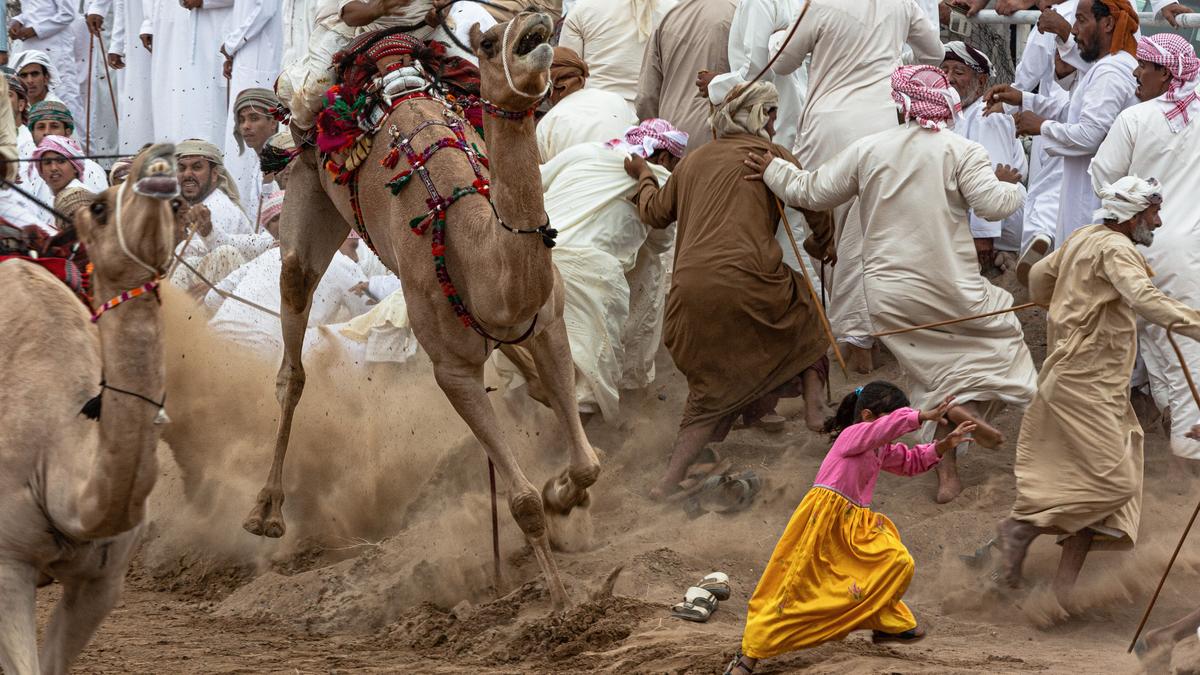
HIPA award | How photographers from West Asia are looking beyond war and violence to redefine their world
The Hindu
Explore the beauty of Lebanon, Saudi Arabia, and the Arab world through the lens of talented photographers at HIPA.
The year has been difficult for Lebanon with war and destruction engulfing the Mediterranean country. Known for its capital Beirut and its beautiful mountains and Roman ruins, the country suddenly has found itself embroiled in the Israel-Palestine crisis. First came the pager blasts of September 17, followed by images of exploding buildings and of the dead and the injured. However, in the world of photographer Ihab Fayad, the Israeli bombing raids are nowhere to be seen. His work gives a hint of the violence unfolding all around but the war and its difficulties are nowhere to be seen.
Fayad focuses on the 150,000 hectares of land on Mount Lebanon that hosts some of the most ancient olive groves in the world. They produce exquisite olive oil that is a symbol of national identity and pride. However, this year, the region has suffered as around 40,000 olive trees were destroyed in the Israeli attacks. In his photographs, Fayad shows how olive grove owners harvest the fruits carefully covering them in white cotton fabric and choosing the most succulent olives to be driven in battered 1980s taxis to the olive mills.
His photographs show a tradition that has been a part of the region for nearly 5,000 years. War and violence may come and go but the glorious Lebanese tradition of making olive oil has continued uninterrupted. Fayad, who received an honourable mention in the recent Hamdan bin Mohammed Bin Rashid Al Maktoum International Photography Award (HIPA) in Dubai, is part of an emerging tradition of photography in the Arab world — reinterpreting itself by often looking away from the war and violence that has been the defining feature of imagery from the region.
Starting with the Iran-Iraq war of the 1980s and the Gulf war of 1990-91, the primary images from the West Asian region have been associated with violence, terror attack and human tragedy, but this year at HIPA, a large number of entries and award winners provided a different way to look at the region, stretching from Palestine and Lebanon to Saudi Arabia and Oman. This alternative view of the geopolitical fulcrum of West Asia was also seen in the work of Duhain Abdulhaim. His canvas is the Saudi Arabian desert and Saudi history and identity. The kingdom is the home of Islam and it is also a hydrocarbon powerhouse driving the world economy — these two have therefore been the primary lenses used to view Saudi Arabia. But Abdulhaim takes his lens to the vast desert and the ancient, mysterious stone mustatils that have added a supernatural air to the arid landscape.
These stone mustatils are vast geometric formations found in the Arabian desert. These deserts were considered to be empty, contributing to the name Rub El Khali – empty quarters. The photographer shows that the deserts are not khali or empty but in fact are home to the mysterious mustatils. Among all the mustatils, ‘the face’ remains the most interesting. Abdulhaim with his images shows that the empty deserts of Saudi Arabia might have hosted an ancient human civilisation whose roots remain unknown.
A similar attempt was made by Samy Al Olabi, winner of the HIPA Photographer of the Year Award. A Syrian by birth, Al Olabi was educated in Cairo and came to work in the United Arab Emirates. It was while dealing with the stress of his profession that he took to photography — in fact, astrophotography — which captures the stunning night sky over the Arabian peninsula.
From the sky to the mountains, Al Olabi has been prolific in covering the natural beauty of the Arab world that is often overtaken by the mainstream media’s focus on military campaigns and conflicts. In his camera, the grey, barren mountains turn green after being sprinkled by rain and he shows that the stereotypes of mass media are not necessarily the reality of the Arab world.











